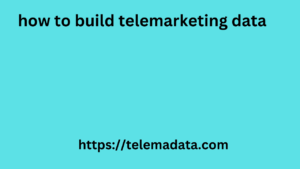From changes in online shopper behavior to the integration of new technologies like artificial intelligence, strategies that worked in the past may no longer be effective.
In this article, we’ll explore how inbound marketing is evolving, emerging trends, and how businesses can adapt to stay competitive.
The Importance of Inbound Marketing in the Digital World
Inbound marketing has become a key pillar of modern marketing strategies. Allowing businesses to attract, engage, and delight customers in a more effective and natural way.
Originally introduced by HubSpot in 2006, this marketing approach has undergone numerous transformations to adapt to changes in technology and consumer behavior.
In an increasingly digital world where people are bombarded with information and advertising. Inbound offers a more human and authentic approach to building meaningful relationships with potential customers.
In recent years, we have seen a revolution in the techniques and platforms used to reach and engage audiences.
From a heavy reliance on search engines. We are moving to a dominance of social media, driven by the growing popularity of voice searches and advanced algorithms that personalize the user experience.
Additionally, the integration of technologies such as artificial intelligence is redefining the optimization of marketing campaigns, making the process more efficient and targeted.
Below, we explore the major trends shaping the future of inbound marketing, analyzing how strategies must evolve to remain relevant and highlighting the importance of combining organic and paid tactics, having an engaging website, and using artificial intelligence to optimize performance.
The Shift from Search to Social
When inbound marketing was first introduced, search engines were at the center of customer attraction strategies. Optimizing content for organic search was crucial to being found by potential customers who were actively searching for products and services online. SEO was the key to success, and businesses invested heavily in improving their search engine rankings.
Telemarketing data is a modern marketing system. Telemarketing is very effective for direct marketing. We provide telemarketing data for all how to build telemarketing data countries. We have telemarketing data of all countries including Bangladesh, India, Belarus, Belgium, Japan. If you want, you can increase your business customers using the data provided by us. Contact us to buy telemarketing data from us. We try to provide accurate data.
Over time, online shopping behaviors have changed significantly
Users are no longer limited to searching for 2024 greece telegram users library resource information through traditional search engines. The rise of social media has transformed the way people discover and interact with content. Social platforms have become not only places to socialize, but also powerful tools for research and product discovery.
For example, many people are seeing ads on cl lists Instagram or Facebook that perfectly align with their interests and needs, leading them to make purchases directly from the platform.
These changes in user behavior mean that inbound marketing strategies must adapt to remain effective.
Investing in social media becomes as crucial as investing in SEO
Companies need to be present not only on search engines, but also on platforms such as Instagram, Facebook and LinkedIn. Creating content that not only attracts visitors to the website, but is also proactively shared on social media to reach and convert the target audience is crucial.
In summary, while search engines remain important, the future of inbound marketing sees an increasing dominance of social media as a channel for discovery and conversion.
Companies must therefore rebalance their efforts, ensuring they are present and active on social media to capture the attention of modern consumers.
Combining Paid and Organic Marketing
Inbound marketing, in its original form, focused exclusively on organic content and storytelling: the idea was to naturally attract customers through valuable content, without the use of paid advertising.
This approach leveraged blogging, SEO, and organic social media to build relationships and increase visibility.
Today, the evolving digital landscape requires a combination of organic and paid marketing.
Growing competition and changes in social media algorithms make it more difficult to gain visibility with organic content alone. Paid campaigns allow you to amplify the reach of your content and reach specific audiences more efficiently.
To maximize the effectiveness of inbound marketing, it is essential to integrate organic tactics with paid campaigns. Here are some ways to do this:
Content promotion
Use paid ads to promote high-quality organic content.
Retargeting: Reach users who have already engaged with organic content through targeted ads.
Lead Generation: Create paid campaigns to generate leads that can be nurtured with organic content.
Importance of an Engaging Website
Despite the growing importance of social media, the company website remains the beating heart of any inbound marketing strategy. It is the place where potential customers go to learn more about the company, explore the products or services offered and find answers to their questions.
A well-designed and functional website is essential to create a good first impression and guide visitors along their path to purchase.
An effective website must be more than just an online showcase
It must tell an exciting story that captures the attention of visitors in a matter of seconds and invites them to explore further. The user experience must be smooth and engaging, with intuitive navigation, fast loading times and responsive design to adapt to all devices.

